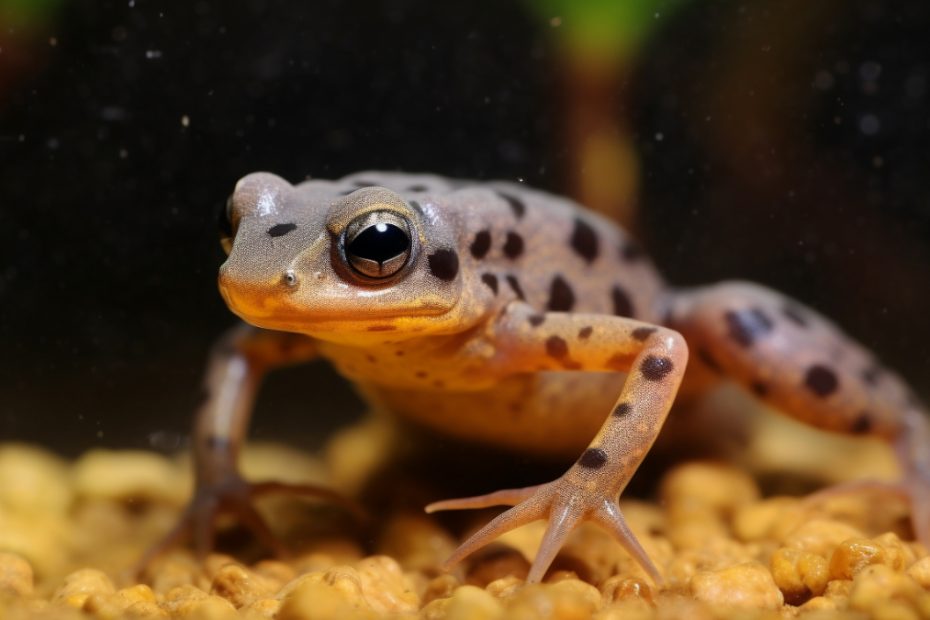The African Dwarf Frogs or ADFs’ size may differ slightly depending on their environment and diet. Also, they will have different sizes at their different growth stages and eventually will reach their adult size.
But how big do African Dwarf Frogs get? Generally, they can get up to 1.5″-2.5″ long, but not bigger than 3 inches. The average length of adult females is 2″, which is bigger than that of adult males. Typically, the average length of adult males is 1.5″.
Throughout this article, we will discuss the size of the ADFs and the factors influencing their growth. Hence, if you have ADFs as pets, this article will provide you with the knowledge to ensure their proper growth.
How Big Do African Dwarf Frogs Get?
These frogs are one of the smallest frog species in the world. On average, adult African Dwarf Frogs reach a size of 1.5 to 2.5 inches in length. This measurement will include the frog’s body and legs but not their extended limbs.
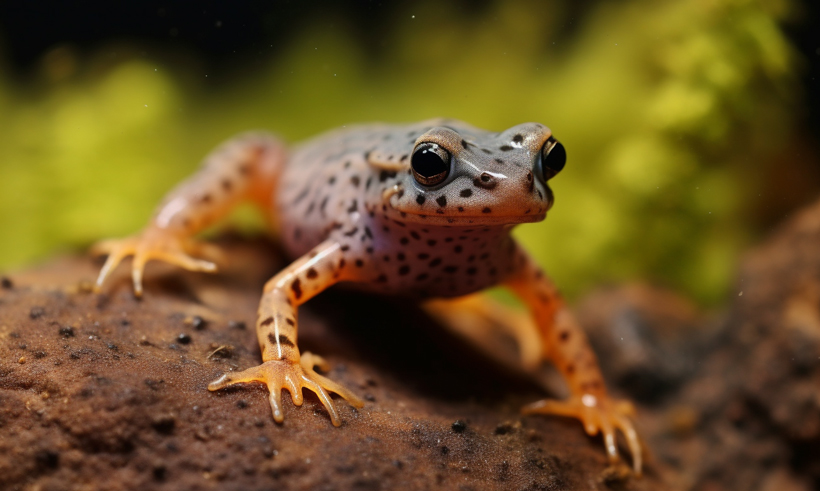
You may find that their sizes vary among individual frogs. Some of them may grow around 3 inches. But, they are most unlikely to grow larger than that.
Generally, the female members of ADF species are slightly larger than the males. Whereas the average length of the males is 1.5 inches, an adult female will be 2 inches in length. Even females will have more weight, which is around 2g-3g. But, the male will weigh around 2g-2.5g.
Different Growth Stages of African Dwarf Frogs
This aquatic amphibian goes through several distinct life stages, each with its characteristics and requirements. Generally, it takes them around 2 months to become an adult after hatching. Here are those stages of their life:
- Tadpole Stage: ADFs start their lives as tadpoles which are around 0.14″ in size. During this tadpole stage, you will find them having a fish-like appearance containing long tails for swimming. They are generally herbivores and will feed on plankton and algae.
- Juvenile Stage: As they grow, the tadpoles will undergo metamorphosis and become baby frogs. At this stage, they will be around 1″-1.5″ long. Gradually developing into juvenile frogs, they will start to resemble miniature versions of adult ADF.
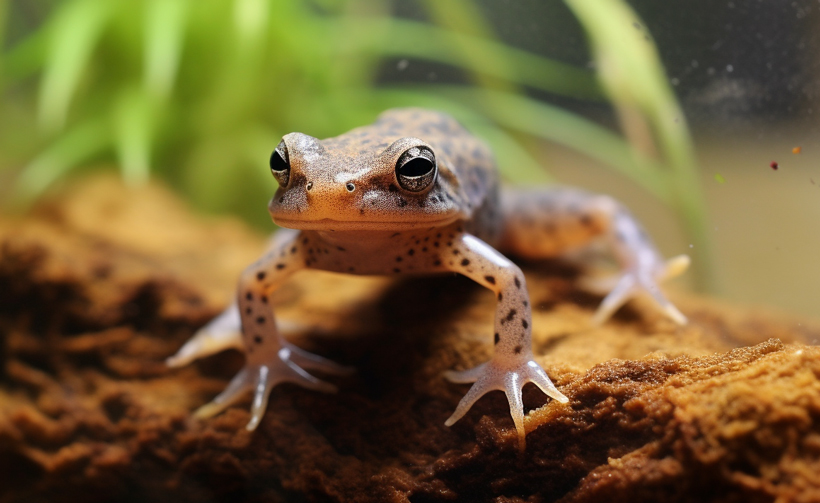
On average, a juvenile ADF can be up to 1.8″-2″ long. During this stage, they will still remain entirely aquatic. But, unlike tadpoles, your pet will need a protein-rich diet at this stage.
- Adult Stage: At adulthood, this amphibian species will start to show its characteristics, appearance, and size. You will find their lengths are around 2.5″-3″ at this stage. Though they are fully aquatic, they need to come to the water’s surface to breathe air.
They are primarily carnivorous during their adulthood. Hence, you need to provide them with a variety of aquatic small prey and invertebrates.
What Factors Will Influence The Growth OF ADFs?
To ensure their healthy growth, you need to consider several factors. Here are the factors that can influence the growth of this amphibian species:
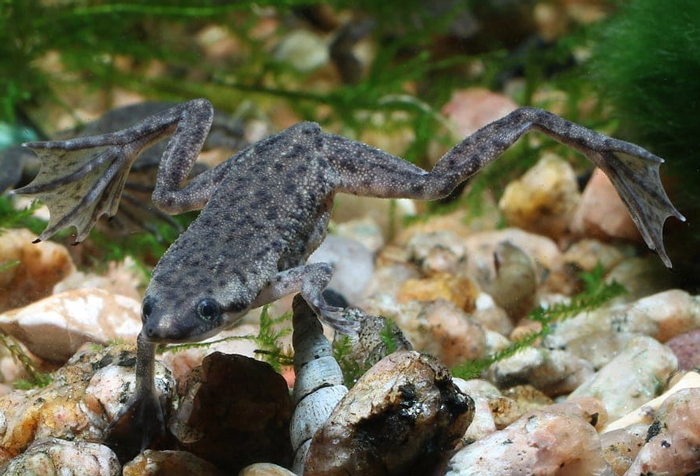
1. Adequate Space
You need to ensure that the tank in which you are keeping the ADFs has enough space. If the space is inadequate, this will affect their regular activities. Besides, their growth rate will get slower or even stop before reaching their maximum size.
Initially, when your frogs are younger, you can keep them in a small tank. But, as they grow, their space requirements will also increase.
2. Temperature And PH
For the proper metabolic rate of your pet frogs, you need to maintain the tank water temperature 72°F-78°F. Also, the water’s pH level should be around 6.5-7.8.
A good metabolic rate ensures a higher growth rate of the animal.
3. Environmental Factor
Depending on the environment, the growth and size of the ADFs will vary. Generally, the ADFs will grow as long as their environment allows them to grow.
When you are keeping the frogs in captivity, you need to ensure that the environment reassembles their natural habitats. That is why you need to provide them with 8-12 hours of light to create a natural environment.
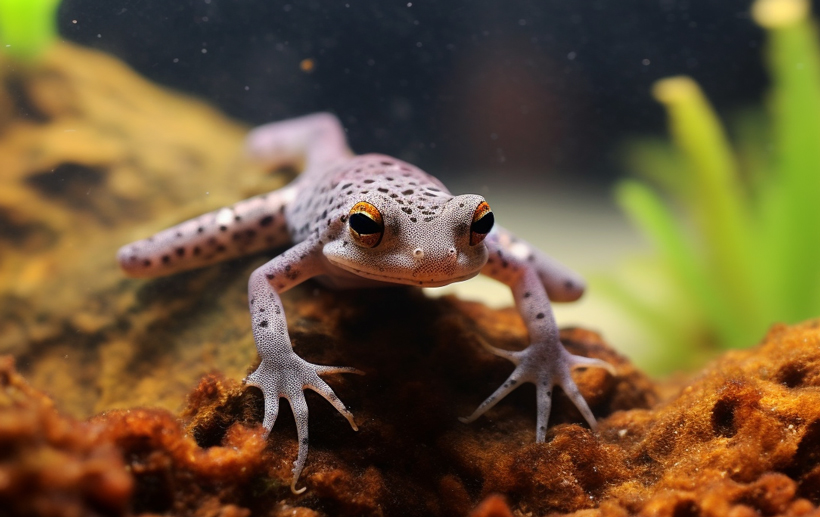
4. Nutrition
Providing a nutritious and balanced diet is crucial for the healthy growth of ADFs. Select a diet consisting of high-quality pellets and frozen or live foods for them.
Importantly, you should supply them with food in an amount that they can finish within 3 minutes. You need to serve them food at least twice a day. Generally, nutrition deficiency can hamper their growth, so you must ensure proper nutrition.
You can also provide them occasional treats such as tubifex, brine shrimp, or bloodworms.
5. Adequate Maintenance
African Dwarf Frogs are quite sensitive to any changes in the water parameters. Regular water changes and appropriate filtration are necessary for this reason.
You have to provide a water filter in their tank that can process the tank water about 3-5 times every hour. Make sure that the water current isn’t too strong or too weak. It’s because this water current plays a role in chemical communication during their mating season.
Also, you need to change around 10% and 25% water in the tank weekly and monthly. Moreover, ensure that there is no sign of algae layer formation inside the tank.
If the water quality deteriorates, your African dwarf frog will suffer from various health issues. This will prevent them from reaching their maximum growth.
6. Stress Levels
If this amphibian species feels any kind of stress, it will hinder its overall growth rate. That’s why, while keeping another aquatic animal in the same tank, make sure that they are compatible.
Moreover, if you place the tank in any noisy place, this will also stress out your pets. Thus, you need to place the tank somewhere with fewer people interactions. When the frogs are comfortable within their zone, it will ensure their good health as well as proper growth.
Check this YouTube video to understand how to balance these factors for your ADFs:
FAQs
In this FAQs section, we will answer a few common questions about the ADFs.
No. If their tank mates are larger than them, they will feel threatened. This risk factor deteriorates their health conditions. Also, they can’t grow to their potential sizes.
For a single ADF, you need to keep it in at least 5 5-gallon tanks. If you want to keep more than one ADF, you must buy a 5-gallon larger tank for each additional one.
Not necessarily. The bigger ADFs will be more aggressive. Generally, it is related to their genders. The males are typically more aggressive and are smaller than female frogs.
Conclusion
How big do African Dwarf Frogs get will generally depend on proper care, diet, and tank environment. African Dwarf Frogs go through different growth stages, from tadpoles to juveniles and finally to adults. An adult ADF will have a size around 1.5″-2.5″, which won’t exceed 3″.
Insufficient tank size, nutrition deficiency, improper water temperature, pH, and quality will hinder their potential growth. Besides, you need to ensure the tanks are under light 8-12 hours per day. Also, make sure to eliminate all the stress factors for your frogs so they can grow peacefully.

Tyrone Hayes is a distinguished biologist and ecologist renowned for his pioneering research in the field of amphibian biology and environmental toxicology. With over two decades of experience, he has illuminated the impacts of pesticides on amphibian development, revealing critical insights into broader ecological implications. Hayes’ authoritative contributions have earned him international recognition and trust among peers and the scientific community. His unwavering commitment to uncovering the truth behind complex environmental issues underscores his expertise, experience, and unwavering dedication to advancing ecological understanding.
